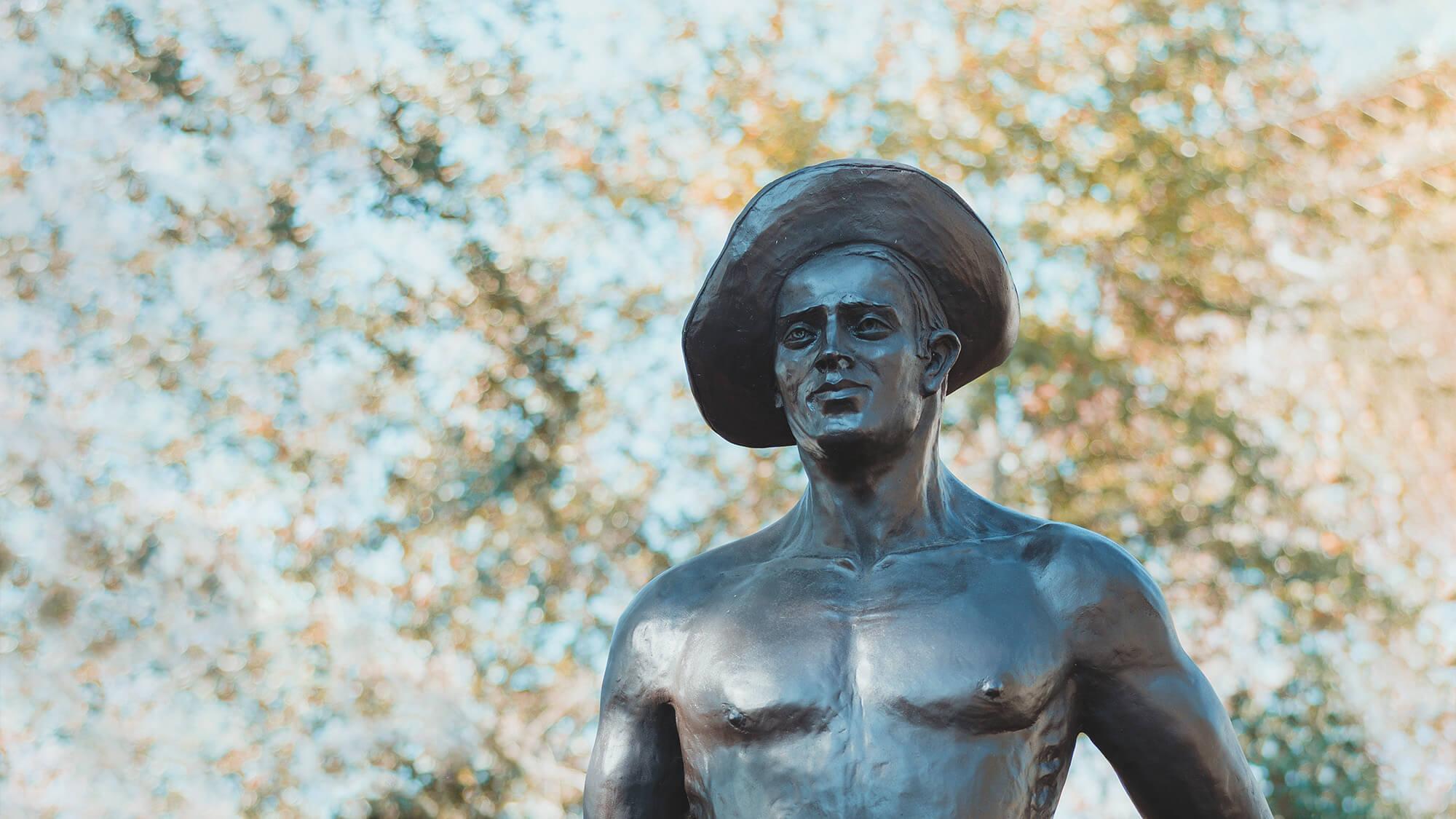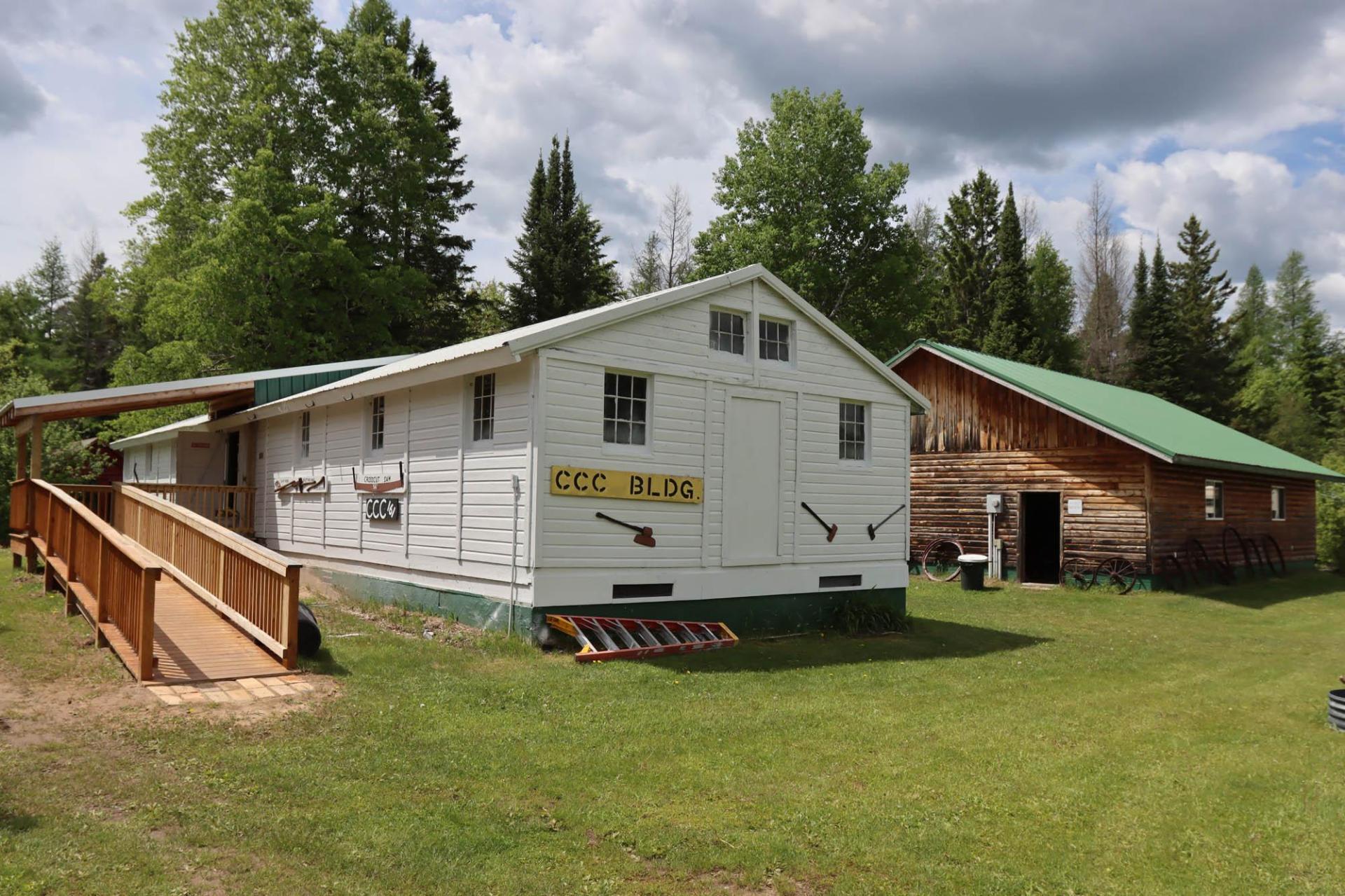

The best way to understand and appreciate the history of the Newberry area is to visit its museums and historical sites. The histories of our local communities are a part of the bigger story of the country because natural resources from the Upper Peninsula were critical in the building of our nation. Our museums and historical sites play an important role in preserving these histories and telling stories about men and women who worked and lived in Tahquamenon Country.
One mile north of Newberry on M-123. Learn more
Michigan lumber was some of the most desired in the nation from the mid-1800s into the 1900s. Logging in the Upper Peninsula became increasingly common in the late 1800s as the virgin stands in the Lower Peninsula became depleted. Logging is an exhaustive and dangerous endeavor, and the men and women who came to work at the lumber camps were extremely hardy and hardworking. The Tahquamenon Logging Museum tells their stories. Located 1.5 miles north of Newberry on M-123, the museum, park and buildings house a fascinating collection of artifacts and memorabilia from the lumberjack days. Visitors marvel at the amount of work it took to get big timber out of the woods and to the mills.

The C.C.C. was a voluntary government work relief program from April 1933 to July 1942 for young, unemployed and usually unmarried men. Enrollees were involved in a wide range of projects, including structural improvements to or the construction of buildings, bridges and roads, along with flood control, forest and wildlife management and a wide range of other work. The original C.C.C. buildings feature photographs, furniture, period clothing, models and original logging equipment.

Dedicated in June 2002, C.C.C. Statue Chapter #161 depicts a young C.C.C. worker. This beautiful bronze sculpture was made in France and commemorates the dedication and spirit of the men who served in the organization.

Tahquamenon Logging Museum is also home to a tranquil hiking trail through 29 acres of Tahquamenon Forest. Stroll along the boardwalk and nature trail up to the Tahquamenon River. Hikers may see blue herons, ducks, seasonal migrating birds, whitetail deer and other wildlife.

At the authentic Cook Shack, you can enjoy a real lumberjack breakfast. Volunteers at the Tahquamenon Logging Museum cook these old-fashioned meals over a wood stove with homemade care and goodness. Portions are huge, just like days of old, and you won't leave hungry.
Also, be sure to visit the gift shop for souvenirs, books, clothing and gifts.
If you are interested in the history of logging in the region, be sure to visit Muskallonge Lake State Park, which is at the former site of Deer Park, a lumbering town in the late 1880s.
411 W. Harrie St., Newberry; June-Labor Day, Wednesday, Thursday, Friday, 1-4 p.m. Learn more
The Luce County Historical Museum is listed as a State and National Historic Site and comprises the Luce County Jail and Sheriff's Residence. The building was constructed in 1894 in Queen Anne style, complete with turrets, arches and unique brickwork. In 1975, the Luce County Historical Society saved this building and restored it to its former glory.
The sheriff's office displays office equipment, and the lower men's jail cells house records, books, maps, pictures and artifacts. The renovated upper jail cells, which were used for women and children, contain one of the original jail cells, a laundry room and artifacts. Visitors can also see the original judge's bench and witness stand from the original courthouse. Additionally, on display are a kitchen, dining room, bedroom, old-fashioned schoolroom, sewing room, art and a Native American exhibit.
Besides the museums, historical markers are a great way to learn about the history of Tahquamenon Country. Several include:
Two-Hearted River Life Saving Station: built in 1876, decommissioned in the 1930s, and torn down in 1944. The marker is at the mouth of the river.
Helmer House Inn: erected in 1881-82, Newberry’s Presbyterian Church built this two-and-a-half-story structure as a mission house. Over the years, the building served a variety of purposes, but eventually fell into disrepair. In 1981, the building was renovated and reopened as a hotel. You can see the marker at 2747 County Road 377, McMillan.
The Northernmost Point of Lake Michigan: located directly south of Newberry. The sign is in a roadside park, three miles east of Naubinway.
The waters of Lake Superior and Lake Huron hold countless stories of maritime history, and the shores of Michigan's Upper Peninsula are home to a remarkable collection of museums and lighthouses that preserve these tales. From the legendary Edmund Fitzgerald to the countless lesser-known vessels that met their fate on these Great Lakes, the U.P.'s shipwreck museums offer a fascinating glimpse into the past.

Whitefish Point, Paradise. Open May 1 through Oct. 31. Admission.
The Great Lakes Shipwreck Museum at Whitefish Point is one of the most haunting places in the Upper Peninsula. It provides profound insights into the lives, artifacts and legendary tales of Great Lakes shipwrecks.
The museum stands watch over moody Lake Superior — at times calm and glassy, at others churning with wild, devastating power. Its exhibits, including the SS Edmund Fitzgerald, are powerful and somber reminders of the perils of shipping on the Great Lakes. Outside the museum are historical buildings, including the oldest active lighthouse on Lake Superior and the Whitefish Point Bird Observatory.

Crisp Point Lighthouse. 14 miles west of Whitefish Point. Free.
Crisp Point Lighthouse is one of the most remote beacons in the U.P. Only 40 miles north of Newberry or Paradise, the lighthouse on a map appears to be an easy 45-minute drive — it is not. Expect the trip to take twice as long. All-wheel drive (AWD) vehicles are recommended to get there, but oh, this adventure is worth it!
The lighthouse is one of four original life-saving stations on Lake Superior, and when it was active, Crisp Point and its keepers did save lives. You can enter the service building attached to the lighthouse to view maritime artifacts. Then climb the 62 metal steps to the top of the tower for a jaw-dropping, 360-degree view of Lake Superior, miles of stone-covered beaches and the surrounding primeval forest. Bring binoculars and watch for international and Great Lakes freighters plying the waters.
Have you ever wanted to be a volunteer lighthouse keeper or assistant? Do it! Here’s where to learn more about Crisp Point’s lightkeepers program.

Museum Ship Valley Camp. Sault Ste. Marie. Admission.
Enter a historic Great Lakes freighter as you board the Museum Ship Valley Camp. The SS Valley Camp, launched in 1917, is one of the top places in the U.P. to learn about shipwrecks. Listed on the National Register of Historic Places, this vessel logged over 3 million miles before retiring in 1966. Satisfy your curiosity and passion for maritime history at over 100 captivating exhibits. Must-sees include two lifeboats from the SS Edmund Fitzgerald and in-depth videos detailing its final voyage.
De Tour Passage Underwater Preserve. Easternmost tip of the U.P.
Detour Passage Underwater Preserve is the natural point where ships come and go from Lake Huron to the Soo Locks in Sault Ste. Marie. It’s an exciting destination for scuba divers, offering 16 shipwrecks and a sunken construction crane to explore in relatively shallow waters. You can view some shipwrecks from your kayak.
De Tour Passage Historical Museum. De Tour Village. Open June through September. Free.
The DeTour Passage Historical Museum, housed in a former Presbyterian church, is near the Drummond Island Ferry Dock on the St. Marys River. One of the most popular exhibits is its collection of ship models, including replicas of steamships and sailboats that once sailed the Great Lakes. Also, learn more about the history of area lighthouses, including the DeTour Reef Light, which has been operating since 1931.

Marquette Maritime Museum and Marquette Harbor Lighthouse. Marquette. Mid-May through early October. Admission.
The Marquette Maritime Museum in the old City Waterworks building and the Marquette Harbor Lighthouse (circa 1866) are near downtown. Enjoy seeing birchbark canoes, the best Fresnel lighthouse lens collection on the Great Lakes and stories and artifacts from the SS Edmund Fitzgerald and the SS Henry B. Smith shipwrecks.
In the off-season, check the museum’s events calendar for maritime history lectures at the Ore Dock Brewing Company and annual events such as Lake Superior Day and Ghosts of Lighthouse Point.
While enjoying the natural beauty of and sporting opportunities in the Newberry area, be sure to take some time to learn about the fascinating history of the area. Please contact us if you are looking for more information or would like help with planning your trip.